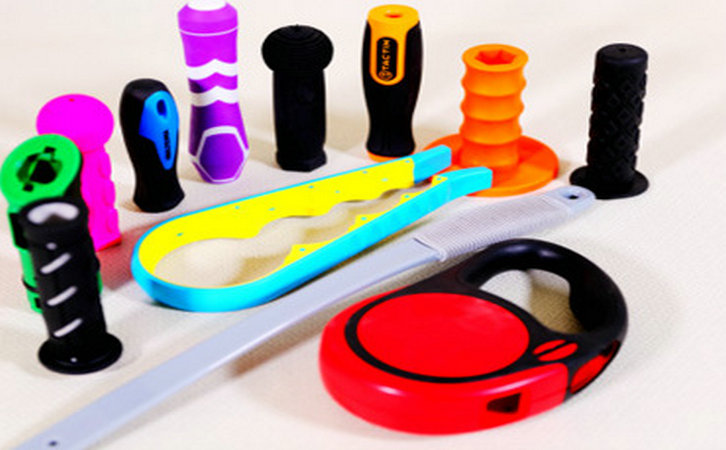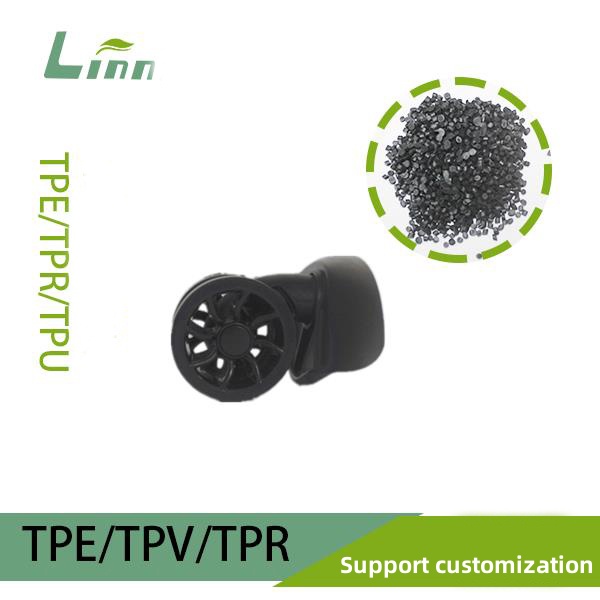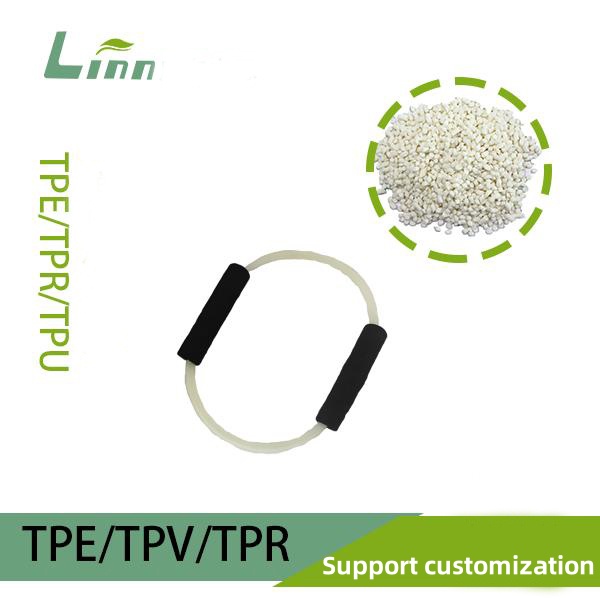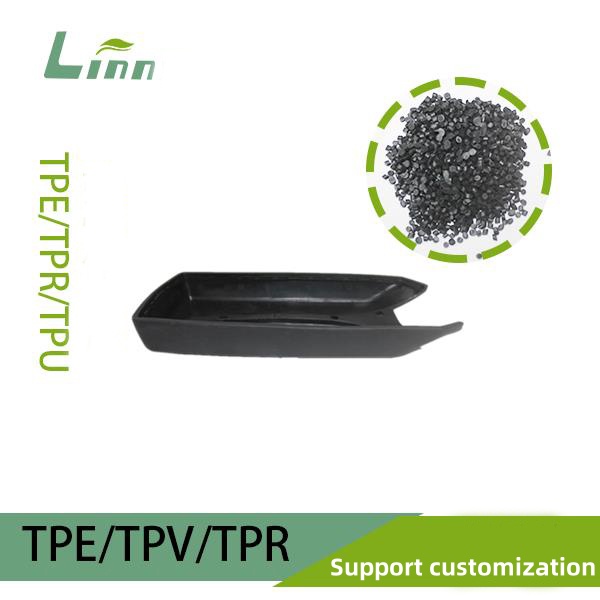If you’ve ever stood by an injection molding machine, watching TPE (Thermoplastic Elastomer) parts pop out, only to notice those pesky burrs—those thin, unwanted flashes of material clinging to the edges—you know the frustration. As someone who’s spent years in the TPE processing world, I’ve seen my fair share of these imperfections. Burrs not only ruin the aesthetics of soft rubber parts but can also affect functionality, slow down production, and drive up costs if you’re stuck manually trimming them. The good news? There are faster, smarter ways to handle TPE burrs, and I’m here to share the insights I’ve gathered from countless hours of troubleshooting and optimizing. In this article, I’ll walk you through why burrs form, how to prevent them, and the most efficient methods to remove them when they do appear, all while keeping your production line humming.

Why Do Burrs Form in TPE Soft Rubber?
Burrs, also known as flash, are excess material that escapes the mold cavity during injection molding, forming thin, irregular edges. For TPE—a soft, flexible material with unique flow properties—burrs are especially common. From my experience, the main culprits behind burr formation include:
Mold Design Issues: Gaps in mold parting lines, worn mold surfaces, or improper venting can allow molten TPE to seep out.
Material Properties: TPE’s high flowability and low viscosity make it prone to escaping through tiny mold imperfections.
Process Parameters: Excessive injection pressure, high temperatures, or improper clamping force can force material into unwanted areas.
Equipment Wear: Aging molds or insufficient clamping force from the injection machine can exacerbate burr formation.
Understanding these causes is the first step to tackling burrs efficiently. My approach focuses on prevention (stopping burrs before they form) and removal (dealing with them quickly when they do occur). Let’s dive into practical strategies to streamline your TPE burr handling.

Strategies to Prevent and Remove TPE Burrs Efficiently
1. Optimize Mold Design and Maintenance
A well-designed and maintained mold is your first line of defense against burrs. Here’s how to get it right:
Tighten Parting Line Tolerances
Burrs often form when molten TPE sneaks through gaps in the mold’s parting line. Ensure the parting line is machined to tight tolerances (ideally 0.01-0.02mm). I’ve seen cases where simply re-machining a worn parting line reduced burrs by 80%.
Enhance Venting Design
Poor venting can trap air, increasing internal pressure and pushing TPE into gaps. Add vent slots (depth 0.01-0.03mm) in areas prone to burrs, but keep them shallow to avoid flash. Proper venting balances air escape with material containment.
Regular Mold Maintenance
Mold surfaces wear over time, creating micro-gaps that encourage burrs. Schedule mold inspections and polishing every 3-6 months, focusing on parting lines and high-wear areas. A clean, polished mold (e.g., SPI B-1 finish) minimizes material seepage.
Here’s a reference table for mold optimization:
|
Optimization Area |
Recommended Specification |
Notes |
|---|---|---|
|
Parting Line Gap |
0.01-0.02mm |
Tighter gaps reduce material escape |
|
Vent Slot Depth |
0.01-0.03mm |
Balance venting and flash prevention |
|
Maintenance Frequency |
Every 3-6 months |
Polish parting lines to maintain fit |
2. Fine-Tune Process Parameters
Adjusting injection molding parameters can significantly reduce burr formation while maintaining part quality.
Lower Injection Pressure
Excessive pressure forces TPE into mold gaps. Set injection pressure to 60-100MPa, starting at the lower end and increasing only as needed for complete filling. In one project, reducing pressure from 120MPa to 90MPa cut burrs by 50% without affecting part integrity.
Optimize Injection Temperature
TPE’s low viscosity at high temperatures (e.g., 180-230°C) makes it more likely to leak. Use the minimum temperature recommended in the material’s Technical Data Sheet to maintain flowability without excessive fluidity.
Increase Clamping Force
Insufficient clamping force allows the mold to separate slightly, creating burrs. Calculate the required clamping force based on part surface area and TPE flowability (typically 2-4 tons/cm²). Ensure your machine can deliver this force consistently.

Here’s a table for process parameter adjustments:
|
Parameter |
Recommended Range |
Adjustment Direction |
|---|---|---|
|
Injection Pressure |
60-100MPa |
Lower to reduce material seepage |
|
Injection Temperature |
180-230°C |
Use minimum effective temperature |
|
Clamping Force |
2-4 tons/cm² |
Increase to ensure mold closure |
3. Select Appropriate TPE Material
The choice of TPE grade can influence burr formation, as material properties like viscosity and flowability play a big role.
Choose Higher-Viscosity Grades
TPEs with lower Melt Flow Index (MFI, e.g., 10-20g/10min at 190°C, 2.16kg) are less likely to flow into mold gaps compared to high-flow grades. Consult your supplier for grades optimized for low-flash applications.
Avoid Overuse of Additives
Some additives, like plasticizers or flow enhancers, can reduce viscosity, increasing burr risk. Keep additive levels (e.g., <5%) balanced to maintain material stability.
Pre-Dry the Material
Moisture in TPE pellets can lower viscosity unpredictably, contributing to burrs. Pre-dry at 60-80°C for 2-4 hours to ensure consistency.

Here’s a table for material selection guidelines:
|
Property |
Recommended Specification |
Notes |
|---|---|---|
|
Melt Flow Index (MFI) |
10-20g/10min |
Lower MFI reduces flash tendency |
|
Additive Content |
<5% |
Minimize flow enhancers |
|
Drying Conditions |
60-80°C, 2-4 hours |
Remove moisture for consistent flow |
4. Efficient Burr Removal Techniques
Even with prevention measures, burrs may still appear. When they do, you’ll want to remove them quickly to keep production on track. Here are the most efficient methods I’ve used:
Cryogenic Deflashing
This method uses liquid nitrogen to freeze TPE parts (to around -80°C), making burrs brittle and easy to remove via tumbling or blasting with plastic media. It’s fast, automated, and ideal for high-volume production. I’ve seen cryogenic deflashing cut processing time by 70% compared to manual trimming.
Laser Trimming
For precision parts, laser trimming uses focused beams to vaporize burrs without damaging the part. It’s expensive but highly accurate, especially for medical or electronic components. Ensure the laser wavelength (e.g., CO2 lasers at 10.6µm) is suited for TPE.
Mechanical Deflashing
Automated tumbling or vibratory deburring with abrasive media can remove burrs from simpler parts. Use soft media (e.g., walnut shells) to avoid scratching TPE’s soft surface. This method is cost-effective for medium-scale production.

Manual Trimming (Last Resort)
For low-volume or prototype runs, manual trimming with precision blades or scissors may be necessary. Train operators to use ergonomic tools to minimize fatigue and ensure consistency. However, this is labor-intensive and should be avoided for large batches.
Here’s a comparison table for burr removal methods:
|
Method |
Speed |
Cost |
Best For |
|---|---|---|---|
|
Cryogenic Deflashing |
High (batch) |
Moderate |
High-volume, complex parts |
|
Laser Trimming |
Medium (per part) |
High |
Precision, high-value parts |
|
Mechanical Deflashing |
Moderate |
Low |
Medium-scale, simple geometries |
|
Manual Trimming |
Low |
Low (labor) |
Prototypes, low-volume runs |
Real-World Case Study: Streamlining Burr Handling
A few years ago, I worked with a manufacturer producing TPE grips for consumer electronics. Their parts had persistent burrs along the edges, requiring hours of manual trimming that bottlenecked production. Here’s how we tackled it:
Mold Inspection: Found the parting line had worn to a 0.05mm gap. We re-machined it to 0.015mm and added 0.02mm vent slots.
Process Tweaks: Reduced injection pressure from 110MPa to 85MPa and lowered melt temperature from 220°C to 200°C.
Material Adjustment: Switched to a TPE grade with an MFI of 15g/10min (down from 30g/10min) and introduced a 3-hour pre-drying step.
Burr Removal: Implemented cryogenic deflashing for high-volume runs, reserving manual trimming for prototypes.
These changes slashed burr occurrence by 60%, and cryogenic deflashing reduced post-processing time by 75%. The production line became smoother, and the client could meet tight delivery schedules. This experience underscored the power of combining prevention and efficient removal techniques.

Preventive Habits for Burr-Free TPE Production
To keep burrs at bay long-term, integrate these practices into your workflow:
Track Mold Wear: Monitor parting line condition and schedule maintenance proactively to prevent gaps.
Standardize Parameters: Create a process parameter database for each TPE grade to ensure consistency across batches.
Invest in Training: Teach operators to spot early signs of burrs and adjust parameters or report mold issues.
Test New Materials: Run small-scale trials when introducing new TPE grades to identify burr tendencies early.
Frequently Asked Questions
To round out this guide, here are answers to common questions about handling TPE burrs:
Q1: Can burrs be completely eliminated in TPE molding?
A: While it’s tough to eliminate burrs entirely due to TPE’s flow properties, optimizing mold design, parameters, and material choice can reduce them to negligible levels. Regular maintenance is key.
Q2: Is cryogenic deflashing safe for all TPE parts?
A: Most TPEs handle cryogenic deflashing well, but very soft grades (e.g., <30 Shore A) may become too brittle. Test a small batch first to confirm part integrity.
Q3: How does mold surface finish affect burrs?
A: A polished mold surface (e.g., SPI B-1) reduces material adhesion and burr formation. Rough surfaces can trap TPE, increasing flash, so maintain smooth finishes.
Q4: Are high-flow TPEs always worse for burrs?
A: High-flow TPEs (e.g., MFI >30g/10min) are more prone to burrs due to lower viscosity, but proper mold design and lower injection pressure can mitigate this. Balance flowability with flash control.
Wrapping Up
TPE soft rubber burrs can be a persistent nuisance, but with the right mix of prevention and removal strategies, you can handle them faster and keep your production line running smoothly. Having wrestled with burrs in countless projects, I’ve learned that a proactive, multi-pronged approach—tweaking molds, fine-tuning processes, and choosing smart removal methods—makes all the difference. I hope this guide equips you with practical tools to conquer burrs and boost efficiency. Got a burr problem you’re still scratching your head over? Drop me a line, and let’s figure it out together!




